JavaScript is disabled. For a better experience, please enable JavaScript in your browser before proceeding.
1 - 20 of 21 Posts
2003 Kawasaki Ninja 500r
07 Ducati SS800 '95 Ducati 900SS/SP '19 Honda CBR650R
2003 Kawasaki Ninja 500r
07 Ducati SS800 '95 Ducati 900SS/SP '19 Honda CBR650R
2003 Kawasaki Ninja 500r
2003 Kawasaki Ninja 500r
1 - 20 of 21 Posts
Top
What’s the difference between tubed and tubeless tires?
Uh, the tube. Even if you never saw a motorcycle before, you’d know that! But of course there’s actually more to it than that. The two kinds of motorcycle tires are constructed differently and have different advantages and applications.
Tubeless tires are designed to be airtight. Tube-type tires are made to work with a separate air-holding component that holds the pressurized air — the inner tube. So how did the system with two parts come before the simpler system with just one?
The Suzuki Van Van 200 is a retro bike, even down to its tubed tires. Suzuki photo.
Tubed tires were the first pneumatic motorcycle tires for several reasons. First of all, rubber’s properties vary wildly depending on how it’s manufactured and treated.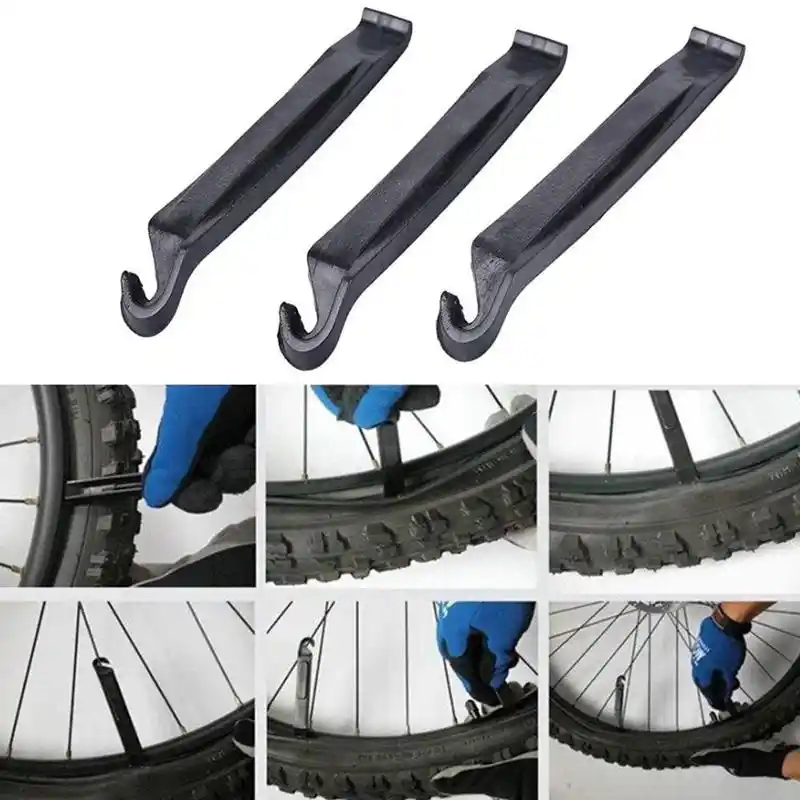 The outside of a tire needs to be tough enough to endure miles of riding, while the tube needs to be soft and flexible so it can be installed inside the tire. By using two types of rubber to do two different jobs, we wound up with two components for much of motorcycling history.
The outside of a tire needs to be tough enough to endure miles of riding, while the tube needs to be soft and flexible so it can be installed inside the tire. By using two types of rubber to do two different jobs, we wound up with two components for much of motorcycling history.
Spoked (wire) wheels disappeared on cars a long time ago but they stuck around on motorcycles way longer, and are still with us today, in many applications. It's hard to make a traditional spoked wheel airtight, due to the holes for lacing spokes to the rim. One-piece wheels, on the other hand, could be made with a totally isolated chamber for holding air. The industry started turning out strong, precise, airtight wheels that made the tubeless revolution possible.
A textbook tubeless wheel on a 2017 Triumph Street Cup. Triumph photo.
Tubeless tires offer some big advantages over their tubed counterparts. They reduce weight, run cooler, and can be made in a wide range of profiles.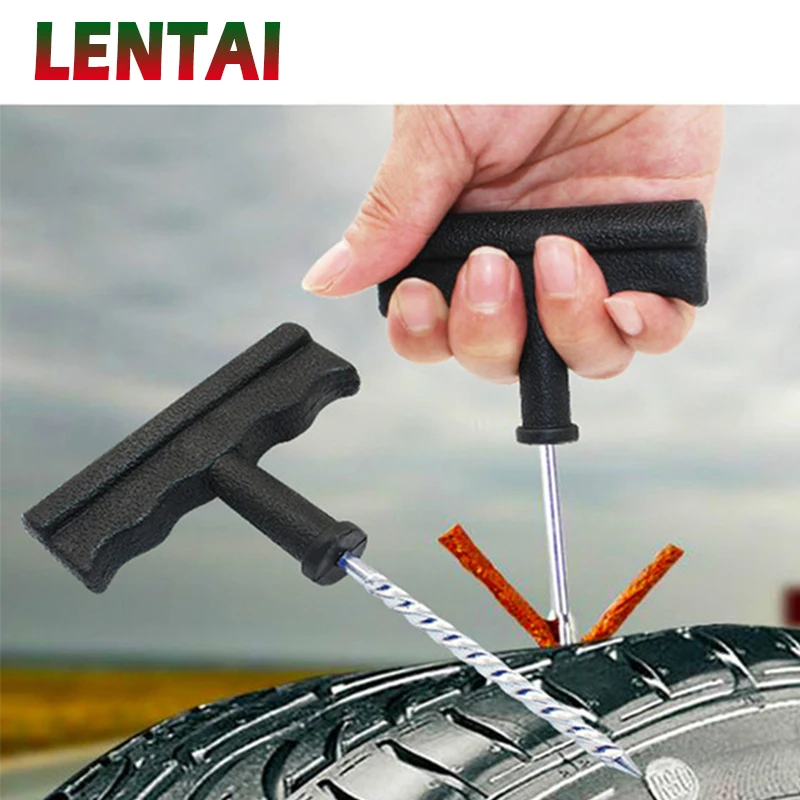 They can also handle punctures better. When a tubed tire takes a nail at 90 mph, the tube can deflate instantly, collapsing the tire with it. A tubeless tire can capture the nail (screw, or pointy road debris of your choice) in the tire’s thick main layer, sealing around the intruder to keep the air inside.
Can being the important word here. It doesn’t always work out that way, but a tubeless tire gives you better odds of experiencing a slow deflation that gives you a chance to get off the road safely, instead of sudden and total deflation.
They can also handle punctures better. When a tubed tire takes a nail at 90 mph, the tube can deflate instantly, collapsing the tire with it. A tubeless tire can capture the nail (screw, or pointy road debris of your choice) in the tire’s thick main layer, sealing around the intruder to keep the air inside.
Can being the important word here. It doesn’t always work out that way, but a tubeless tire gives you better odds of experiencing a slow deflation that gives you a chance to get off the road safely, instead of sudden and total deflation.
The other aspect of flat tires that matters here is repairing them. If you're standing alongside a busy highway with a nail in your tire, it's a lot easier to make a temporary repair on a tubeless tire. With a plug kit and a way to reinflate the tire, you can usually get back on your way. With a tube-type tire, you have to remove the wheel from the motorcycle so you can take the tube out of the tire, patch the hole (or replace the tube, if you're carrying a spare), then reassemble everything and reinflate the tire.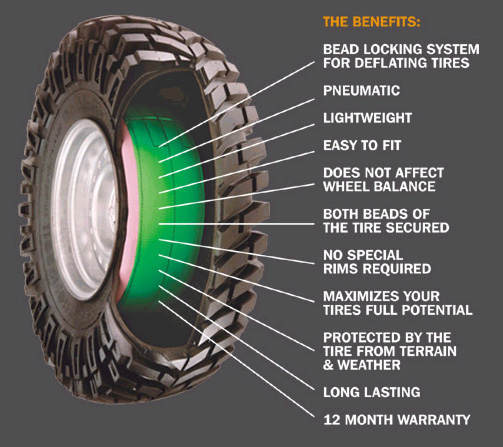 It's still doable, but there are extra steps and you need a way to raise your motorcycle for wheel removal.
It's still doable, but there are extra steps and you need a way to raise your motorcycle for wheel removal.
Two reasons, mainly: off-road performance and looks.
Off-road machines are the biggest holdouts from tubeless tires. Spoked wheels offer real advantages in holding up to rough terrain, and where you have spokes you generally have inner tubes. Exceptions exist these days, however, especially on some larger, more expensive adventure-touring bikes. Some have wheels with the spokes attaching to the edge of the rim, rather than the center, or to a flange. This allows the wheel to be airtight and enables the use of tubeless tires, giving ADV riders the best of both worlds: the advantages of tubeless tires for high-speed road work and the resilience of spoked wheels for off-road pounding. Neat stuff.
The other place we typically see tube-type tires is on cruisers or other motorcycles with a retro style. For some riders who demand a traditional look, spokes just look right, and spokes mean tubes.
For some riders who demand a traditional look, spokes just look right, and spokes mean tubes.
This Yamaha Super Ténéré has tubeless aluminum rims. The spokes mount externally, so the seal isn't compromised. Yamaha photo.
The valve stem is an extension of the airtight chamber with a tiny valve inside for changing the pressure inside the tire. In a traditional inner tube setup, the valve stem is part of the tube itself. Poking through a hole in the rim, you’ll spot the stem and its lock nut holding it in place. When you replace your tube, the valve stem goes with it, and the new one replaces it.
Tubeless tires are the opposite. The valve stem is separate and mounts to the rim. (If you’ve got a pair of big disc brakes up front, consider adding a right-angle valve stem so you can more easily inflate your tires with the air hose at the gas station.) Tubes and valve stems should both be changed with every tire change.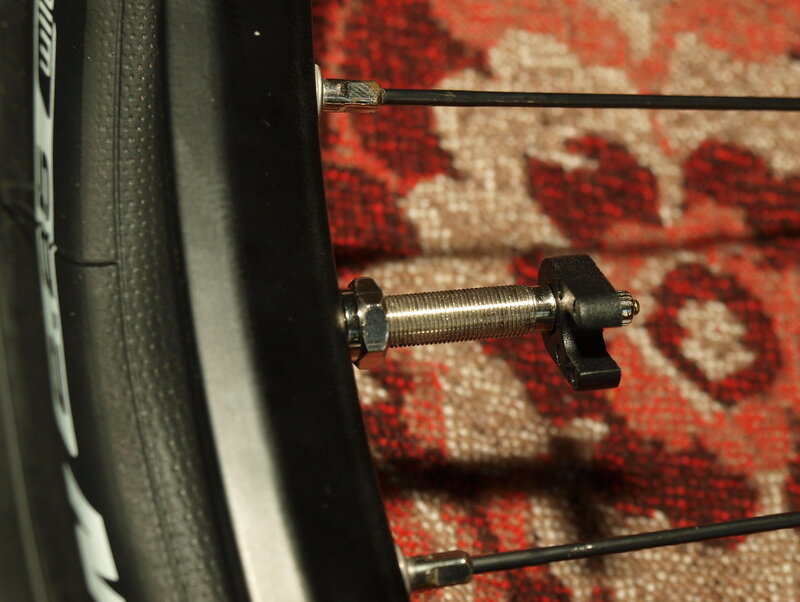 Heat cycling weakens rubber, weak rubber cracks, cracks leak, and flat tires are no fun, based on my testing.
Heat cycling weakens rubber, weak rubber cracks, cracks leak, and flat tires are no fun, based on my testing.
Right-angle valve stems can make life easier. RevZilla photo.
These are both things you can do, but that doesn't mean it will be easy, advisable or the best solution. If you want to run a particular type of tire on your motorcycle, the easiest way to do that is to pick a motorcycle that designed to do that in the first place. You may also be able to swap wheels, but that can be an expensive and complicated proposition.
If you insist on running a tube in a tubeless tire, the general rule of thumb is to treat the setup as one load rating and one speed rating less than the tubeless tire says it can handle. That's mainly because your tube and tire combination will be creating extra heat, especially the harder you ride.
As for a tubeless tire on a tubed wheel, we won't say it’s impossible, because someone will come along and say they did it successfully, but it's not easy and it's probably not the best way to accomplish whatever it is you're trying to do.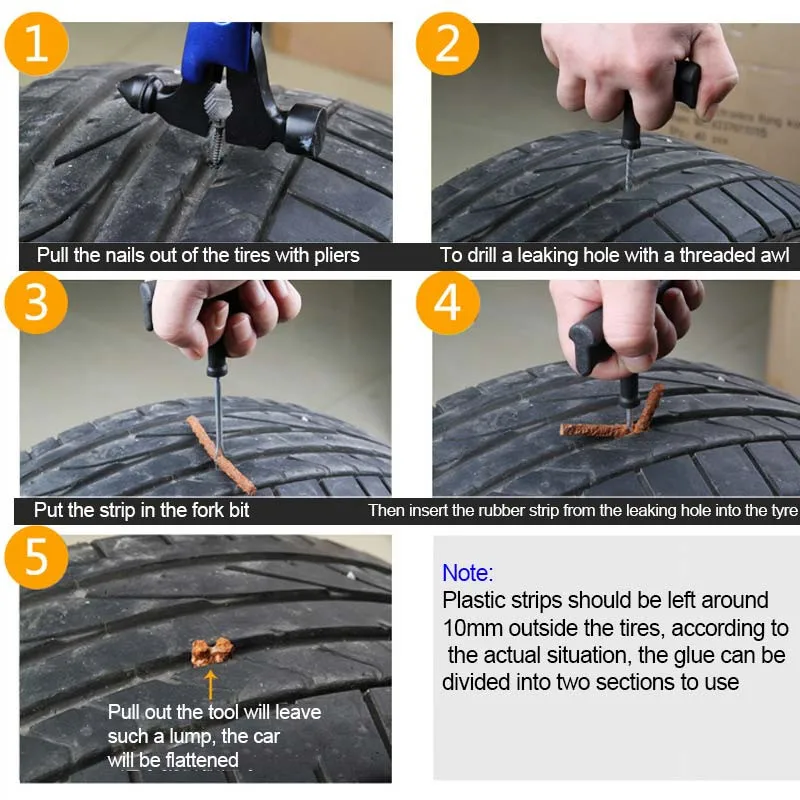 You’d have to seal everything up with either some goo or a rubber liner to make the wheel airtight (it probably won't stay airtight). More importantly, the tubeless tire's bead will probably not seat properly and seal on the tube-type wheel's rim. They're not made for each other, after all. In short, it probably won't work and it may be unsafe to try.
You’d have to seal everything up with either some goo or a rubber liner to make the wheel airtight (it probably won't stay airtight). More importantly, the tubeless tire's bead will probably not seat properly and seal on the tube-type wheel's rim. They're not made for each other, after all. In short, it probably won't work and it may be unsafe to try.
Spurgeon runs a tube in the rear of his KTM, even though he could use tubeless. When airing down, tubes can actually be an advantage. Spurgeon Dunbar photo.
If you’d like to learn more about motorcycle tires, make sure to read Lemmy’s Tires 101 guide and his tips on changing tires yourself. If you’ve never seen how tires are made, that’s worth checking out, as well. There’s probably a lot more to tires than you realize.
content
From a safety point of view, a tubeless tire is better because of its design and construction, which allows you to continue on to the next service station.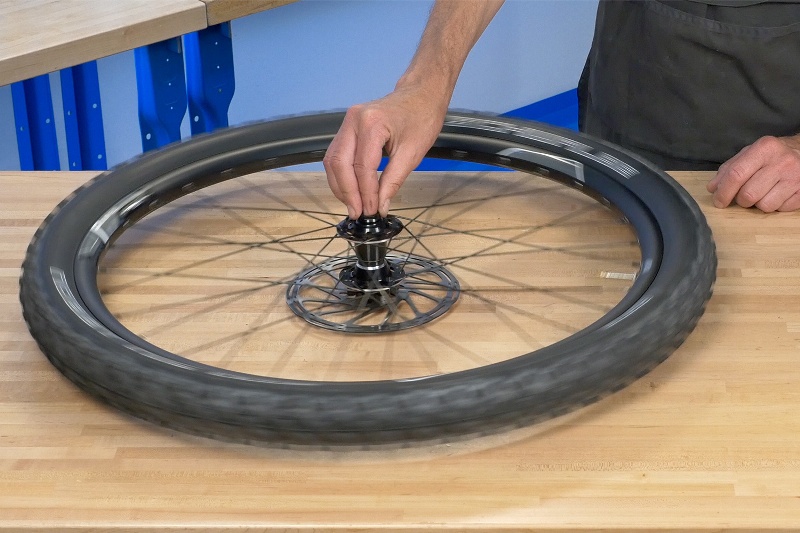 On the other hand, tube tires, although cheaper, are not the most reliable to drive.
On the other hand, tube tires, although cheaper, are not the most reliable to drive.
Tubeless tyres, or also called tubeless (TL) which is its term in English, are wheels that have a pressure valve built into the rim and which due to their design do not need an inner tube. The first wheels had a camera.
If the word Tube Type appears, this means that the tire has an inner tube. If the word Tube Less appears, this means that the tire does not have an inner tube.
Tube type tires do not require any special lining or treatment as they are designed to be used with an inner tube. Therefore, if we use them as if they were tubeless-ready, the sealing fluid can damage the inside of the tire.
Tubeless tires are a type of wheel that does not have an inner tube and whose use in the automotive world has gradually spread throughout its history.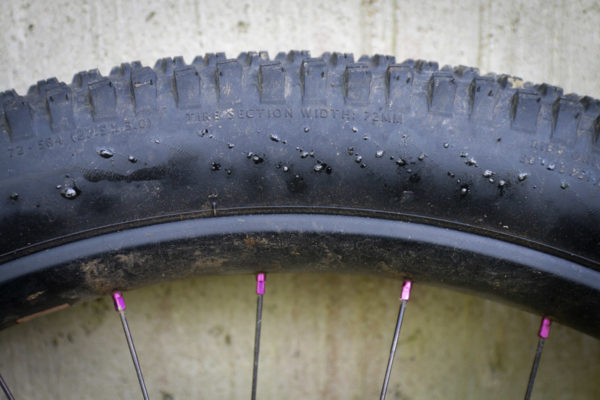
A tubeless system is a system that keeps air in the wheel with a sealing fluid. Tubeless wheels do not use an internal chamber and in the event of a puncture, it is this fluid that is responsible for repairing the breakdown. It is advisable to change this fluid periodically.
One of the main advantages of tubeless tires is that as long as the object that punctured the wheel is not removed, a large amount of pressure will not be lost. In addition, there is no abrasion caused by friction between the air chamber and the cover.
What is lost in comfort is gained in safety. In addition, the driving resistance will be lower and fuel consumption will be reduced. The pressure must be measured cold, as it rises to more than 0.5 bar when hot.
Tubeless, rim profile and spoke holes.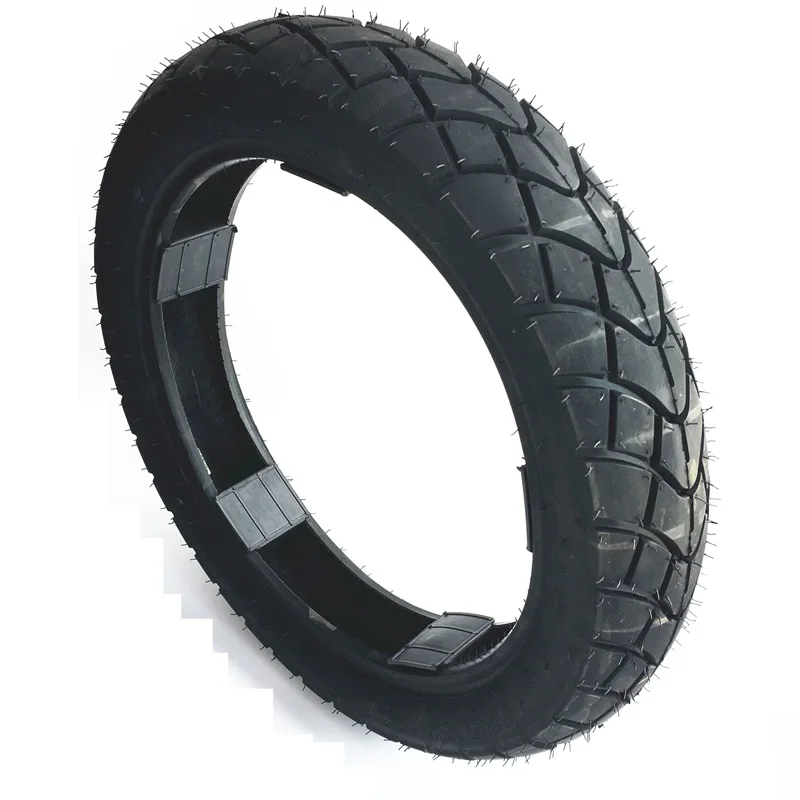 First, to distinguish a tubular rim from a tubeless or tubeless ready rim, you need to look at the profile inside the rim. Tubeless rims have a special profile that provides better bead support.
First, to distinguish a tubular rim from a tubeless or tubeless ready rim, you need to look at the profile inside the rim. Tubeless rims have a special profile that provides better bead support.
In addition to the structure, size and profile of the tire, tires can also be distinguished by tube type (TT) or tubeless type (TL).
Unlike cars, motorcycle tires differ between front and rear. All tires have a setting arrow or a rolling direction arrow. For motorcycles, the front (FRONT) or rear (REAR) wheel is additionally indicated.
- Better roll quality: As a rule, pipes have a comparatively better roll quality. Grip (at the same pressure) is usually better, and the material composition allows the tube to maintain better grip over temperature changes on the pavement.
Tubeless Life
Fluid life varies by manufacturer, bike usage and season. However, it is generally recommended to change tubeless fluid every three months, although there are specialist brands such as X-Sauce that recommend changing every two as a preventive measure.
However, it is generally recommended to change tubeless fluid every three months, although there are specialist brands such as X-Sauce that recommend changing every two as a preventive measure.
If you are tubeless it is very interesting that you have a sahmurai kit that will solve a typical tubeless puncture and stored on the handlebar. This kit includes several wicks and a range of needles so you can fix your puncture quickly and safely. Of course, a new camera is also needed.
Low profile tires are tires with a lower sidewall height and wide tread.
This is a donut-shaped element found on many vehicles that maintains compressed air inside the tires. The air chamber is made of materials that prevent leakage and has valves that allow air to be introduced or removed from its interior.
What to do if you have a flat tire while driving?
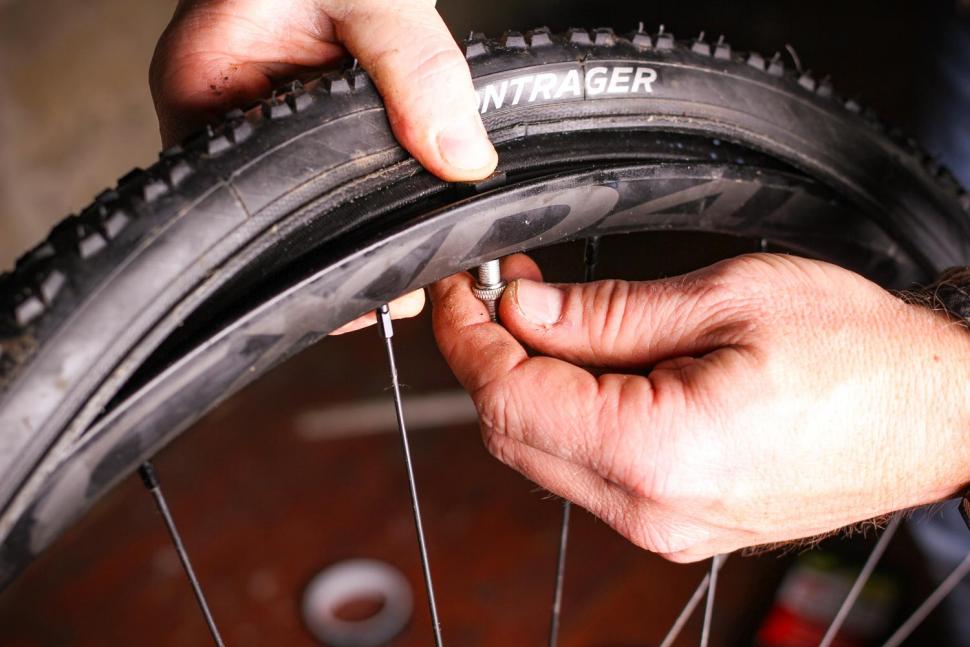
This is very easy to find out, you just have to see if you can see the bottom of the rim inside the rim. The rim tape looks like plastic tape, if you remove it you will see the spoke holes underneath. In this case, your rim is NOT tubeless.
Pros and cons of each type of coating
The difference between tubeless and Tubeless Ready tires is that the finished tires require puncture fluid to seal the coating because they do not have the inner coating of tubeless tires.
Inner tube or tube type tires are the most popular. They are more affordable, easier to install, easier to repair. Available everywhere and with no compatibility requirements (except size and width), and can be mounted on tubeless rims.
Sellomatic Sellomatic, or tubeless, rims have the great advantage of not throwing us off guard in the event of a puncture.
The depth of the new discs varies from 8 to 9 mm. In Ecuador, the legal minimum is 1.6mm, but inclement weather and terrain can make this minimum unsafe, exposing you to crashes and tire damage.
They are 5 years from fitting, 10 years from manufacture. However, when mounting the tire, we take it out of the ideal conservation conditions, so the degradation begins more “seriously”. However, tires always expire, whether they are well-preserved or very poorly preserved.
The front tire usually lasts from 15. 000 to 18.000 to 10.000 to 15.000 kilometers (they wear out faster because they carry more weight and have more friction with the road surface).
000 to 18.000 to 10.000 to 15.000 kilometers (they wear out faster because they carry more weight and have more friction with the road surface).
Top 5 scooter tires
| product | note | |
|---|---|---|
| 1 | Michelin City Grip 2 Rear Front | 4.60 |
| 2 | Front Bridgestone Battlax TH01 | 4.43 |
| 3 | Heidenau K58 M+S Snowtex | 4.36 |
| 4 | Dunlop TT 93GP | 4.34 |
130 | This is a tire width measurement expressed in millimeters. 70 | Indicates the relationship between the height and width of the tire; it is also known as a flank. 17 | This is the inner diameter of the tire, it refers to the size of the rim, and the size is expressed in inches.
3) RIM DIAMETER
"17" means the tire has a diameter of 17 inches and "M/C" means it is for motorcycles. "R" means that the tire has a radial design (if there is a dash "-" instead of R, the design will be normal).
"R" means that the tire has a radial design (if there is a dash "-" instead of R, the design will be normal).
Off-Road Tires (MT)
Mud Terrain or MT tires are very easy to identify due to their aggressive, tough and thick construction. Ideal for improving traction on asphalt.
ZR means that the tire can withstand speeds over 240 km/h. The ZR annotation groups the speed indices V (240 km/h>), W (270 km/h>) and Y (300 km/h>). Prior to 1990, manufacturers used the designation ZR to denote high power tires.
better grip
Generally, a bigger rim means a wider tire. This means that there will be a large contact surface between the rubber and the asphalt, resulting in excellent traction.
As a precaution, all tires should be replaced after ten years, even if they are in good condition and the tread wear indicator has not been reached.
In general, for large motorcycles, we can apply about 2.4 or 2.5 kg/cm2 in the front and 2.8 or 2.9 kg/cm2 in the rear.
So which tire is better? Wide tires are generally better when it comes to pure driving performance. We pay more for more safety, especially on dry roads, sacrificing comfort and cost-effectiveness in the knowledge that there is a greater risk of hydroplaning.
R designates the construction type of the tyre. In this case, as in almost all tires of the latest generation, they have a radial design. Radial means they come with a steel wire mesh.
A traditional tube and tire package is 400g lighter on average than a tubeless system. For this reason, professional cyclists choose the traditional system in search of a balance between weight and performance.
Anti-descent fluid can clog the valve, especially if the valve is down when the bike is stationary. In this case, the adhesive will clog the valve hole and harden, making it impossible to inflate the tires.
It is therefore recommended to change the tubeless fluid every three months, although this may vary by manufacturer. Experts suggest doing this during this period, as they believe that this is the average time that guarantees the service life of the compound.
Another possibility is that we directly buy the anti-puncture tube with liquid included, they are usually more effective than the previous combination, but with the same disadvantage, they do not last forever. In our experience, the average service life of these fluid systems is typically one year.
In a typical tubeless configuration, we can save about 100-150 grams of weight.
pressure. As a rule, tire pressure does not exceed 2 bar. The recommended pressure for wide tires 2.25 and more is 1.7-1.9 bar, and for narrow tires a little more than 1.8-1.9 bar.
Liquid sealant is required for Tubeless Ready tires. For a road tire, a dose of 25-30 ml per tire is sufficient.
Low profile tires also provide better “touch to the car”, the driver has better control of the car and can better predict its behavior. Also, the wobble is much less noticeable.
The most important advantage of a small wheel is faster acceleration. The key to fast acceleration is minimizing the weight of the external components (spokes, rims, tires…). However, when spinning, inertia comes into play.
Benefits of low profile tires
This width also gives them better grip, especially in dry conditions.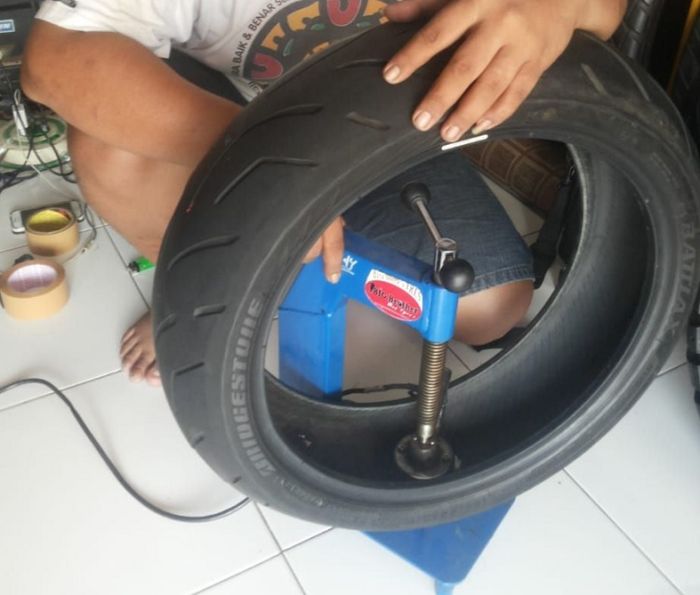 It also has better cornering response than high profile tyres. A feature of the latter, which is always closely related to driving sports cars.
It also has better cornering response than high profile tyres. A feature of the latter, which is always closely related to driving sports cars.
Tubeless tyres, or also called tubeless (TL) which is its term in English, are wheels that have a pressure valve built into the rim and which due to their design do not need an inner tube. The first wheels had a camera.
From a safety point of view, a tubeless tire is better because of its design and construction, which allows you to continue on to the next service station. On the other hand, tube tires, although cheaper, are not the most reliable to drive.
The use of tubes in tubeless tires is not recommended. The reason is that they are designed in such a way that air pressure presses the wheel bead against the rim, thus creating a seal that prevents air from escaping while at the same time preventing the wheel from moving relative to the rim.
One of the main advantages of tubeless tires is that as long as the object that punctured the wheel is not removed, a large amount of pressure will not be lost. In addition, there is no abrasion caused by friction between the air chamber and the cover.
In tubeless tyres, compressed air is placed between the rim and the tire, which is lined with rubber on the inside to seal the hole in the event of a puncture. All this increases safety against skidding in the event of a puncture.
tube tires
There is a tube in the hole in the rim which is used to inflate the tire. Therefore, when a tire is punctured with a sharp object, the air in the chamber quickly escapes. This momentary release of air causes the tire to burst because it is under-inflated.
Tubeless or tubeless, which one suits you best? - Motorcycle magazine.
There is not always a way to call a tow truck, and driving on a flat tire, “chewing” the rubber and killing the rim is at least uncomfortable.
The very first replacement of rubber on a motorcycle or scooter gives reason to think - what is better in terms of quick repairs: tubeless ones that do not require wheel disassembly to eliminate a puncture, but leave the rider helpless if, along with damage, it “led” and flattened the edge of the disc? Or chambers - allowing sealing almost ring breaks (if only there were enough patches), but requiring the removal of rubber from the rim for this? The unequivocal answer is no. Few classics, straights or tourers today remain "loyal" to tube rubber models: tubeless tires are lighter, softer, warm up and cool down faster thanks to simplified heat transfer. In sports, more precisely - enduro and motocross, chamber - on the contrary, prevail: only spoked wheels can "play", withstanding strong alternating loads during landings and impacts.
The nuance is that a tire with a chamber can be put on any spoked or cast disc, and a tubeless one can only be placed on a cast one, because only it can ensure tightness. Tube – can be installed in a tubeless tire as an emergency measure. In case of major damage to the sidewall, cracks or curvature of the edges of the rim, this will make it possible, after pumping up the wheel, to reach the nearest tire service (and there already - straightening, balancing and other maintenance according to the rules). True, for such a focus, it is advisable to take a camera with a face value one less than the diameter of the disk, otherwise it will create folds inside that will rub for a couple of hundred kilometers. The resource of such a “treatment” is large - until the next puncture, like a new one.
It depends on the magnitude of the damage whether it will be possible to eliminate it on your own, or whether you will have to “surrender” to the motorized tow truck. In tubeless - holes up to 5–6 mm are patched, in chambers - as much as there is enough glue and patches, the main thing is the condition of the tire. To determine the extent of the disaster - find a place where you can safely stop without violating traffic rules (where it is prohibited - you will have to sacrifice tires and drive on).
In tubeless - holes up to 5–6 mm are patched, in chambers - as much as there is enough glue and patches, the main thing is the condition of the tire. To determine the extent of the disaster - find a place where you can safely stop without violating traffic rules (where it is prohibited - you will have to sacrifice tires and drive on).
If the wheel deflates slowly, and the object that pierced it is still inside, you can try to carefully drive to the tire shop. A completely deflated "pancake" will have to be resuscitated on the spot, or - remove the wheel and take it to the service.
To find a hole in a tubeless tire, if it is very thin and not immediately visible, the wheel must be pumped up, slowly pouring water - bubbles will go. In place, tubeless tubes can be “harnessed”, or filled with sealant inside, without removing from the motorcycle.
With the second type of tires - more difficult. A torn balloon must be removed from the tire to detect a defect and seal. In a good way, the wheel must be removed from the motorcycle and disassembled on a clean, flat, hard base. Suppose such a “patch” can be provided even off-road, but how to remove the wheel on a motorcycle if it does not have a central stand? And shooting is not required. The motor must be carefully laid on its side, after making sure that the faucet is closed, gasoline does not flow out through the tank cap (antifreeze does not flow from the tank if the motor is “dropsy”), and removing the plastic or wardrobe trunk with fragile contents (if any).
In a good way, the wheel must be removed from the motorcycle and disassembled on a clean, flat, hard base. Suppose such a “patch” can be provided even off-road, but how to remove the wheel on a motorcycle if it does not have a central stand? And shooting is not required. The motor must be carefully laid on its side, after making sure that the faucet is closed, gasoline does not flow out through the tank cap (antifreeze does not flow from the tank if the motor is “dropsy”), and removing the plastic or wardrobe trunk with fragile contents (if any).
You will have to unscrew the wheel from the motorcycle only if you need to replace the tire, or it is decided to patch the tubeless tube with a “fungus”. In the absence of a central stand, this will also have to be done on a lying bike, or - make this stand from improvised materials (bricks, stump, car jack), placing them under the crankcase protection from below, the central tube of the frame, the duplex jumper (but not under the plastic, itself engine crankcase or attachments!), under both footrests - if they are not folding, or - under the pendulum.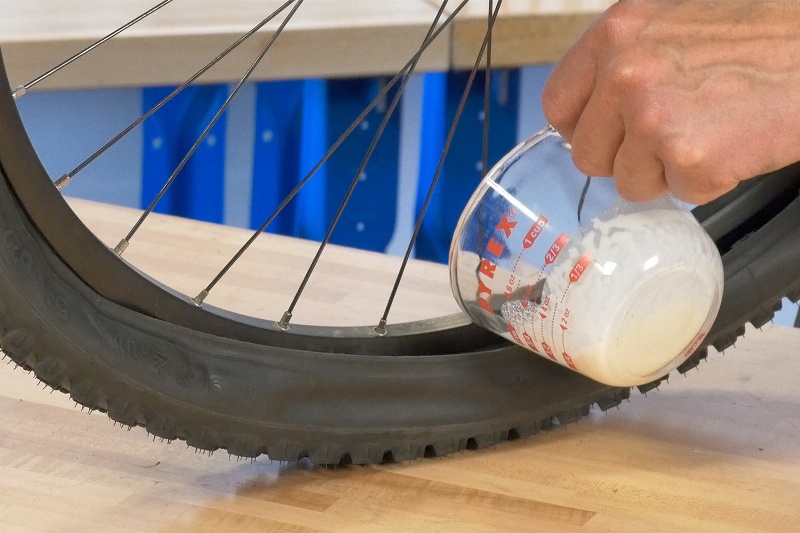 Before removing the rear wheel on a motorcycle, the front fork must be loaded with something, or an even higher lining is made.
Before removing the rear wheel on a motorcycle, the front fork must be loaded with something, or an even higher lining is made.
In a motorcycle tire fitting shop, tubeless tubes are repaired by cold vulcanization. They are removed, disassembled, the puncture site is cleaned from the inside, degreased, lubricated with glue and a calibrated “fungus” patch is inserted into the hole from the inside. The fungus itself is a thin plate of rubber with a “leg” tube in the center. The leg - by the guide wire is dragged through the hole of the damage, and the "hat" seals it.
After half an hour - you can put the tire back. The reliability of such a repair is high, the patch does not cause a significant imbalance, the service life of a sealed tire does not decrease.
This method is also applicable on the road, the main thing is to have the necessary equipment and materials with you:

The fungus repair procedure does not require much experience. The main thing is to keep it clean, fully clean the place where the patch fits, let the glue dry slightly to a dull finish and press (roll) the surface of the fungus with high quality, expelling all the air between the layers. If necessary, you can degrease the place before gluing with gasoline, but without the rest of the above, it will not be possible to fully carry out repairs.
The compressor is sometimes replaced by a small cylinder of compressed air or carbon dioxide. Unlike a mechanical pump, it will immediately create a “throw” of pressure, pressing the tire beads against the rim flanges (in emergency cases, even a fire extinguisher was used to pump flat tubeless wheels). When connecting the compressor, start the bike's engine before you start inflating the tire - let it idle. Otherwise, the motor can "land" the battery, and you will not start.
Otherwise, the motor can "land" the battery, and you will not start.
Manometer - needed for control. It is undesirable to pump over the repaired tire. It is recommended to "inflate" 0.2 atmospheres less than the nominal value. Inflating too little is also bad: a flat tire has a larger contact patch with the road, so the place of a fresh patch will deform more.
“Burning” a tubeless tube and sealing its internal cavity through a nipple are quick, simple methods that do not require special skills. To repair the damage, you only need the materials themselves, and how to pump up the wheel.
Now in Moscow, and not only, 6-5 varieties of cans with a sealant are sold - a quickly hardening "liquid rubber", with a volume of 800 to 250 ml.
Applying "Anti-Puncture" is simple: put a tube with a fitting on the nipple of the camera, turn the can over, and hold the button according to the instructions.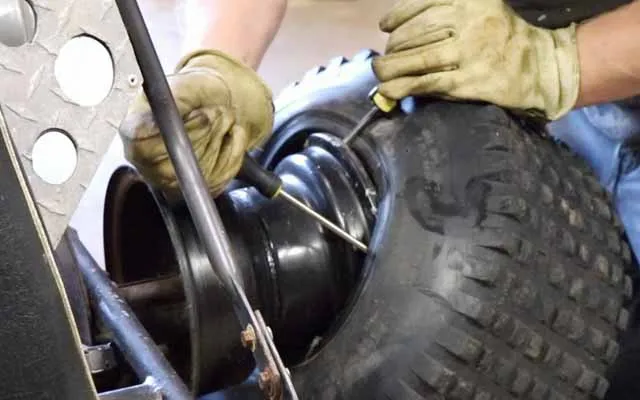 Then - pump up the wheel, cleaning the nipple from the foam, roll it, making a full turn to distribute it.
Then - pump up the wheel, cleaning the nipple from the foam, roll it, making a full turn to distribute it.
The sealant is blown out with air into the puncture hole and clogs it, solidifying. After 20 minutes - you can go. Reliability of repair is high. Resource - until the next puncture.
If you have a compressor, start immediately pumping up the wheel, so it will be easier to work with a puncture, insert a patch, and it will swell faster.
Procedure:

You can go in 5 minutes, you just need to make sure that it doesn’t descend anywhere else.
Outwardly identical, repair kits for harnessing wheels can differ in price by almost half. This variation is explained by different configurations - one will have only three items, the other - six or seven.
A complete tubeless tire repair kit contains:
Regardless of the cost, you need to choose a kit in which the harnesses will be reinforced, and the awl - with a deep spiral winding (notch), and not a “needle file”. Inserting a flagellum is sometimes easier with a regular thin screwdriver. If there is no glue in the kit, or it has dried up, the flagellum is moistened with gasoline.
Inserting a flagellum is sometimes easier with a regular thin screwdriver. If there is no glue in the kit, or it has dried up, the flagellum is moistened with gasoline.
At motorcycle service stations and car services, holes in the chambers are closed by hot vulcanization: a layer of raw rubber is applied to the cleaned, fat-free puncture site and, after squeezing it well, it is heated with a special “iron”. Iron - burns, layers - are fused into a single whole. Reliability of repair is high. The resource will be almost like a new one.
Cold vulcanization (patching) - used if the workshop is not equipped with a vulcanizer. In this case, the quality of the service and the reliability of the repair will depend on the accuracy of the master. For the convenience of gluing, the camera is completely removed in the service, but, I repeat, this is not necessary. It can be repaired on the spot in the same way (there are no other options except for replacing the camera), but without removing it from the motorcycle.
This can only be done if you have two metal mounting blades. At least one, the second can be replaced with another flat tool. You can still disassemble the wheel with a wide screwdriver and a “family” key wrapped with electrical tape. But this is only as a last resort, otherwise you can damage the cord.
Sequence of work:
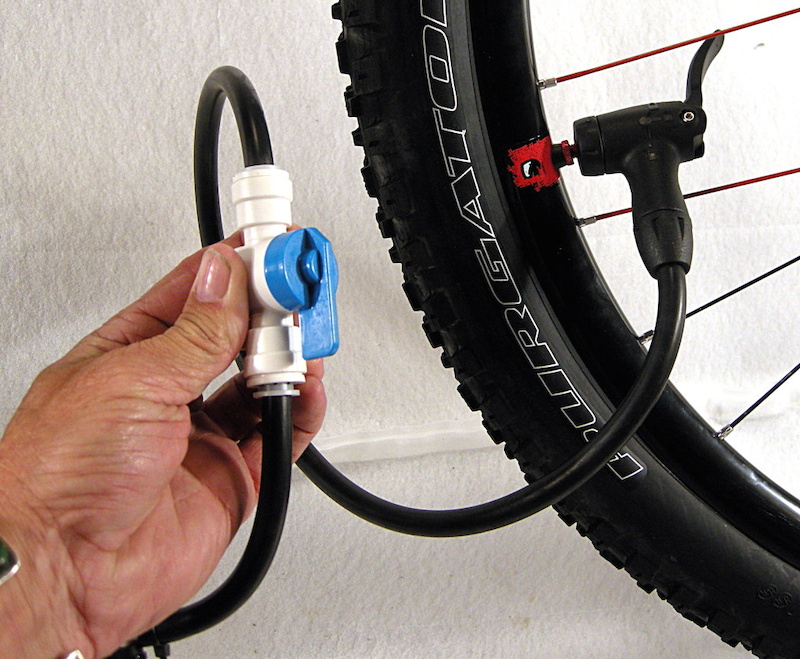 Let the glue dry for a minute.
Let the glue dry for a minute. The fencing must be carried out twice as carefully and more slowly than dismantling, lubricate the side with water or soap, “help” more with your hands, otherwise there is a risk of picking up the edge of the chamber with a spatula and tearing it.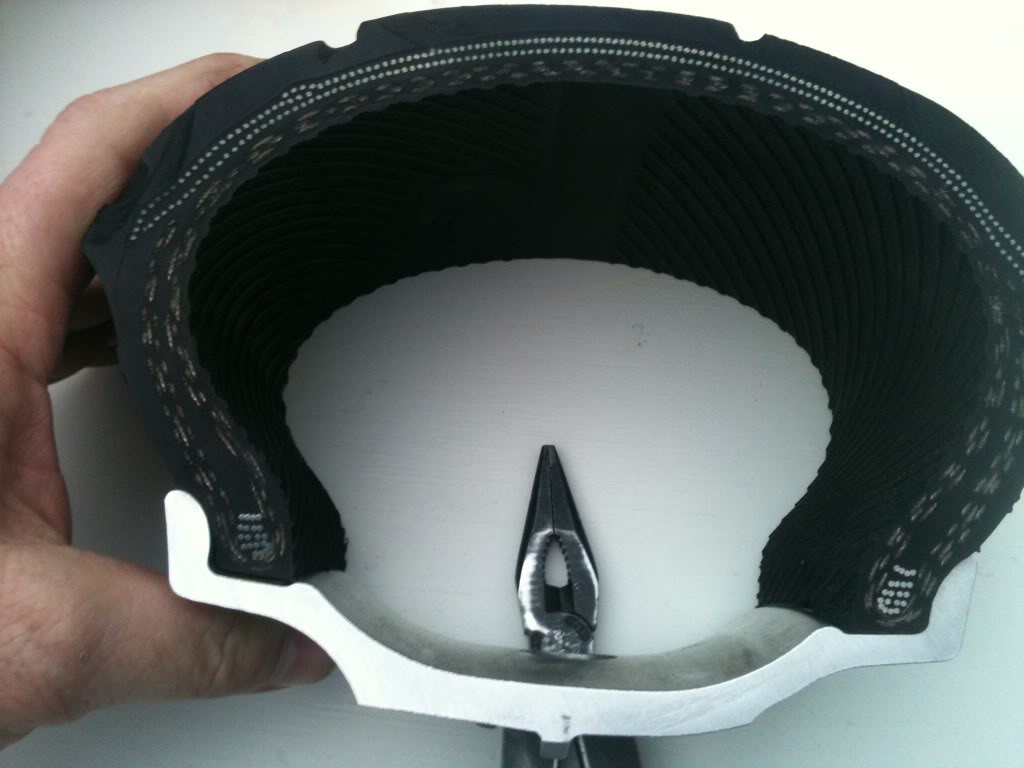
Important! If the wheels of the motorcycle are equipped with tow bars - before pressing the tire bead from the rim, you need to loosen this tow bar! But do not unscrew the nut completely, do not disassemble to the end.
A standard “first aid kit” (a set for repairing classic motor rubber) contains only patches and glue, so it is advisable to supplement it yourself with a piece of “skin” or a needle file. You can degrease with gasoline, or apply a little glue first and wipe off immediately, rolling up the dust with it.
Now there is no shortage of specialized motorcycle workshops not only in Moscow - in all major cities there are motorcycle helpers who help motorcyclists directly on the track, or tow to where you can quickly change the camera, or patch the tubeless correctly, so that there is no trace left. Where there is a guarantee.
Self-replacement of a tire on a motorcycle requires a certain physical condition, and for the first time - a “kilometer of nerves”. At the service station, instead of you, automation will “sweat”, which will not lock up the board and will not scratch the disc coating with a spatula. The main thing is to do it quickly (if you need to go urgently, the price sometimes does not matter).
At the service station, instead of you, automation will “sweat”, which will not lock up the board and will not scratch the disc coating with a spatula. The main thing is to do it quickly (if you need to go urgently, the price sometimes does not matter).
Repair at the service - may be the only possible one if, due to driving on a flat tire, the tire nipple is turned and torn off. Especially if he flew off and got lost, but there is no spare. In mototiremontazhke - there is always a set of consumables for any wheel diameter. In the same place, in extreme cases, you can buy a new tire, or a used dokatka.
In addition to the patch, for normal operation of the wheel, balancing must be ensured. This is generally a useful procedure during any change of rubber, otherwise if there is a strong imbalance, the wheel bearing will inevitably break due to vibrations, and the hands will quickly get tired and “buzz” after long rides.
The first couple of tens of kilometers - do not drive, go at the speed of the flow.